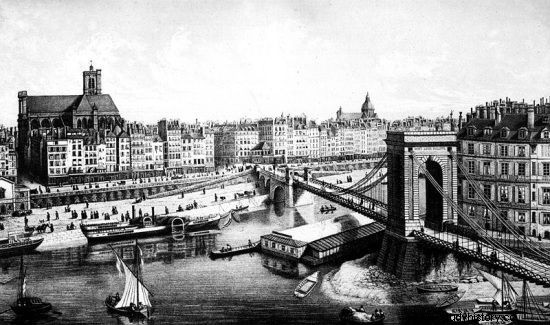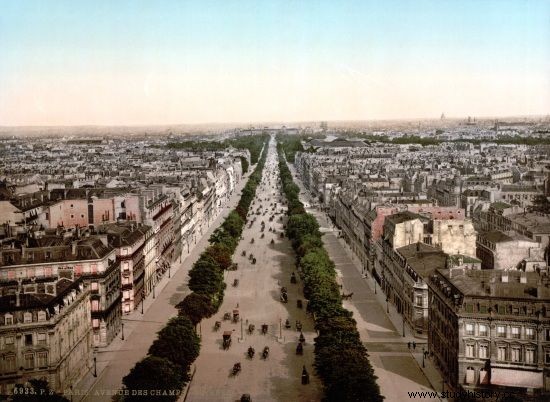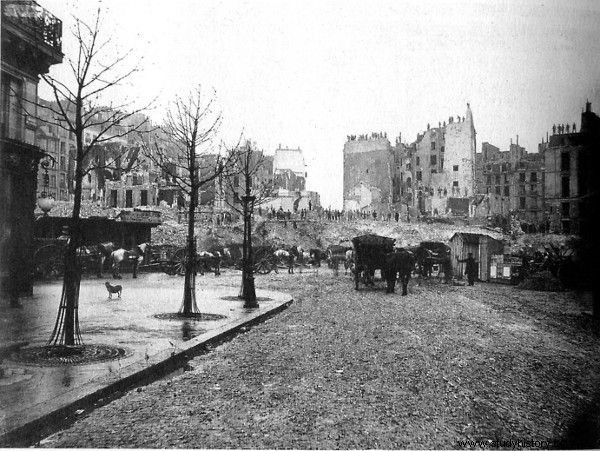In Poland, we got used to living in rebuilt (and often even built) cities less than seventy years ago. We sometimes think with envy of other European countries which, despite world wars, managed to save their capitals and metropolises from destruction. However, do we really have anything to envy, for example, the French, if they not long before ... razed their capital to the ground?
Contrary to popular belief, today's Paris does not have a particularly early birth certificate. Even in the mid-nineteenth century, there was a completely different city on the Seine, which is connected with the present-day capital of France mainly by its name. According to visitors, it looked like a neglected farm.
Paris, with its winding, low-rise streets full of crumbling hovels, certainly did not deserve to be called the capital of the world or the city of lights. Although it had its specific charm, covered with a patina of time, it aroused irritation in the French authorities striving for modernity. Especially that riots and revolts broke out very easily in its poor, narrow streets.
The destruction of old Paris
In the end, Emperor Napoleon III (reigning in 1852-1871) could not stand it and ordered a great reconstruction of Paris. In fact - he issued a death sentence on his own capital.

Old Paris:chaotic, surprising and not very nice smelling…. (1840s)
As Małgorzata Gutowska-Adamczyk and Marta Orzeszyna write in the book “Paris. The city of art and love in the Belle Époque era ”in less than twenty years: half of [all] buildings, from eighteen to twenty thousand, were demolished, and 60% of Paris was completely transformed (p. 38) .
The great project started in 1853 and its implementation lasted until 1870. All works were managed by the baron Georges Haussmann, endowed with almost unlimited powers. There were horrendous abuses during the demolition of the city. First, tenants and tenants were thrown out, and then clever speculators grew rich by extorting compensation from the state:
They bought houses for demolition cheaply and resold them, receiving a lot of compensation, or rented premises in them to substitute persons to collect compensation on their behalf. They raised rents, reported dead souls, and even set up fictitious shops (...) - all in order to raise the amounts of compensation (p. 43) .

And the new Paris:orderly, sedate, with wide streets intersecting it in twelve straight lines ... (1900).
Entire districts were razed to the ground at a frantic pace, and their previous inhabitants were moved to new suburbs. From then on, the center of Paris was to be reserved only for people with money, and not for random throngs - as a result, the authorities also grew richer on the whole project.

Only the hitherto inhabitants and some intellectuals were tearing their hair out. Emile Zola wrote with resignation: The whole of Paris cut like a saber, with open veins , feeding hundreds of thousands of earthworkers and masons ...
Finally, cleanliness, order and order
The new Paris was, in a way, a tribute to order and geometry. According to Małgorzata Gutowska-Adamczyk and Marta Orzeszyna: Baron Haussmann professed the cult of a straight line, so did not hesitate to remove everything that was an obstacle . It is to him that we owe the present shape of the Champs Elysees.
He also ordered the construction of new parks, gardens, squares, including, inter alia, Boulonski Forest and Vincennes Forest, which:(pp. 38-39) .
At the same time, Paris was to be a clean and orderly city. The length of the sewage network has increased sixfold. The entire city was also covered with a water supply network and a hundred kilometers of new streets were marked out on the site of the demolished houses .

Before the beautiful wide avenues were built, a major demolition was necessary…
Special shopping pavilions with 3,000 (sic!) Stores were built in the center, and all new buildings had to meet very strict standards. Their height was to be the same (and not exceeding 20 meters), identical style, roofs inclined at the right angle. Thus Hausmann created a completely new city (p. 40) . A modern, safe and healthy metropolis.
The old, true Paris has irretrievably gone into history and today hardly anyone remembers that it existed at all. And that it was liquidated by the decision of politicians, and not as a result of any war.
Source:
Małgorzata Gutowska-Adamczyk, Marta Orzeszyna, Paris. City of Art and Love at the time of Belle Époque , Polish Scientific Publishers PWN, Warsaw 2012, pp. 37-52.
